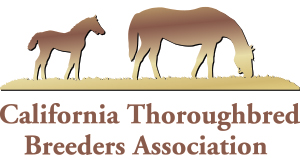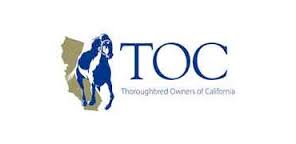By Bloodhorse.com
ARCADIA, Calif. (Mar. 16, 2019) — Santa Anita Park is scheduled to resume live racing March 29, pending approval by the California Horse Racing Board, following an agreement March 16 between track owner The Stronach Group and Thoroughbred Owners of California.
The Arcadia, Calif., oval has been closed for two weeks for testing of its main track in the wake of a spate of breakdowns; 22 horses have died either racing or training since the meet opened Dec. 26. TSG announced a new set of house rules for Santa Anita and the Northern California track Golden Gate Fields, and the two groups worked to come to an agreement March 15-16 on those rules, especially one regarding the anti-bleeding medication Salix, commonly known as Lasix.
The policy on race-day administration of that medication at Santa Anita and Golden Gate was announced March 14 by TSG chairman and president Belinda Stronach, who declared “zero tolerance for race-day medication” at TSG-owned California tracks. Lasix is the only race-day medication allowed in California.
Under the new agreement, no race-day administration of Lasix will be allowed beginning with foals born in 2018 (2-year-olds of 2020). According to a TSG release sent late Saturday night, “Following the recommendation of veterinary experts for the best interest of the health of the current horse population,” horses born prior to 2018 will be permitted to race on Lasix but only at a maximum of 50% of the current levels (from a maximum of 10 CCs to 5).
Because state regulations require a 10-day approval process, racing cannot resume March 22, a date that was formerly considered an option by TSG.
“Once this historic agreement is approved by the CHRB, Santa Anita and Golden Gate will race with these enhanced, new safety and welfare protocols in place,” read the release.
Dr. Dionne Benson, executive director and chief operating officer of the Racing Medication & Testing Consortium, was quoted in the release explaining the reason for gradually decreasing Lasix use as opposed to applying a blanket policy to the horse population regardless of age.
“Lasix is an efficacious medication for the treatment of exercised-induced pulmonary hemorrhage and has been legal in California for almost a generation of trainers,” Benson said. “This change will require many trainers to manage their horses without the aid of this medication in racing for the first time ever. In order to ensure this is done properly and thoughtfully, we need to allow time for this adjustment.”
“This is a complete revision of the current medication policy for Thoroughbred racing. We have worked through the implementation of this groundbreaking model with our stakeholders and the California Horse Racing Board,” Belinda Stronach said in the release. “TSG is committed to the principles of safe horse racing for both equine and human athletes and to making California racing the best in the world. It is my hope the other tracks in California will follow suit. TSG will begin consultation with our stakeholders in other states to put these standards into effect in those jurisdictions, in the best interest of horse racing.”
The Stronach Group owns four other Thoroughbred racetracks in the United States: Gulfstream Park in Florida, Laurel Park and Pimlico Race Course in Maryland, and Portland Meadows in Oregon.
In addition to the new rule on Lasix, the release stated Santa Anita, Golden Gate, and TOC have agreed to the following initiatives for racing and training:
- Complete transparency of all veterinary records;
- Strict limitations on the use of any pain or anti-inflammatory medication and treatment, including legal therapeutic nonsteroidal anti-inflammatory drugs, joint injections, shockwave therapy, and anabolic steroids;
- Trainers must apply for permission to work a horse at least 48 hours in advance;
- Significantly increasing out-of-competition testing;
- Increasing the time required for horses to be on-site prior to a race;
- A substantial investment by The Stronach Group in diagnostic equipment to aid in the early detection of pre-existing conditions;
- No therapeutic medications of treatments will be allowed without a qualified veterinary diagnosis from a state-licensed veterinarian.
Santa Anita, Golden Gate, and TOC are also in alliance “to change the use of the cushion crop … (and) will only allow the use of the crop as a corrective safety measure.”
This directive has already gone into effect during training hours.
The release lauded the model as “an historic agreement to protect the safety and welfare of horses and riders in the state” and added, “This collective mandate enacts the most stringent medication policy in North America.”
If TSG and TOC had been unable to come to an agreement, the issue would have gone to the CHRB, which is currently investigating the equine deaths at Santa Anita. In the TSG release, CHRB chairman Chuck Winner said the board’s previously scheduled March 21 meeting will be moved to March 28 “in order for the full board to consider and take action on those items on which CHRB approval is required.”
“I very much appreciate the efforts made by The Stronach Group, the TOC, and the CTT in coming to this agreement to improve and enhance horse and rider safety,” Winner said in the release. “The CHRB will continue to work with the stakeholders as they move forward. … (Meeting) March 28 allows for the legally required 10-day public notice.”
Santa Anita’s new house rules were designed to be compliant with the International Federation of Horseracing Authorities, which bans all race-day medication.
“The IFHA regulations are in effect at premier racetracks throughout the world and are the benchmark for equine safety and welfare,” read the release. “These modernizations are in addition to the previously announced commitment to the continued engagement of outside experts to regularly review our dirt, turf, and synthetic courses to ensure the safest racing surfaces in the world.”
Horsemen voiced concern about the consequences of an immediate ban and noted Lasix has not been linked to breakdowns.
“There’s no linkage—they’re two different issues,” Greg Avioli, president and CEO of TOC, said early Saturday before the agreement was finalized.
“It all comes down to Lasix because, pretty much, I would say we’re on agreement on everything else,” said Tim Ritvo, chief operating officer for The Stronach Group. “And, understandably, because this is a very scary thing because generations of horses have run on Lasix.”
Ritvo said Belinda Stronach “is steadfast about the health and welfare of the horse.” He noted that people had advised Stronach that Lasix has not contributed to the breakdowns. However, TSG wanted its house rules to reflect “the standards of the rest of the world,” Ritvo explained.
“I think, in the end, the horsemen and track management want what’s in the best interest of the horse,” said Ritvo. “Sometimes we disagree about how we get there and how fast we get there.”
Avioli said TOC wanted the timing of Lasix removal tied to foal crop “to give breeders some time to adjust their breeding decisions.” He said 90% of horses today have run on Lasix and/or both of their parents did.
“If you ban Lasix tomorrow, what does that do economically?” Avioli asked. “How does that impact a horse that won the Kentucky Derby on Lasix?”
After the agreement was finalized, Avioli was quoted in the TSG release: “We appreciate the willingness of Belinda Stronach of TSG and Jim Cassidy (president of California Thoroughbred Trainers) to negotiate in good faith and reach today’s agreement. I am confident we all share the same goal of making California racing safer and doing everything we can to provide additional safety and protection for our horses.”
Before TSG and TOC came to an agreement, TSG put Golden Gate Fields entries on hold. Entries had already been drawn for March 16-17, and the track had three scheduled dark days before a scheduled resumption of racing March 21. As of Saturday afternoon, Golden Gate had not announced the resumption of entries, but it is expected that entries for March 21 will be taken March 17.
The Water Hay Oats Alliance voiced its support for Belinda Stronach Saturday.
“Her brave, bold intentions for reform at Santa Anita and Golden Gate address the growing negative public perception toward American horse racing,” WHOA said in a statement. “The Stronach Group’s stand at their California tracks could cause the first domino to fall. It is WHOA’s hope that this will be the beginning of a bigger, broader industry shift toward meaningful medication reform in the U.S.”


